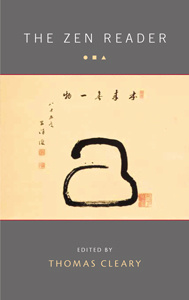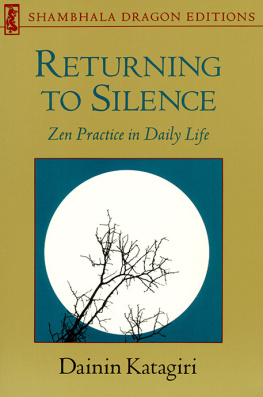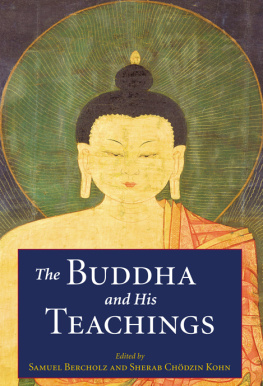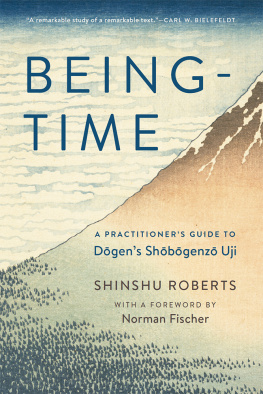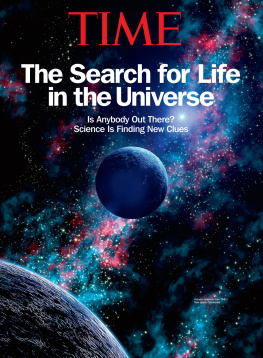Katagiri conveys a zest for Zen understanding that differs from the calm inscrutability of other Zen Buddhists.
Publishers Weekly (starred review)
In this book, Katagiri Roshi presents Dogen Zenjis teachings on being-time and teaches how the blossom of our life force can flourish amidst the flow of change. I recommend this book to all Zen practitioners and to anyone who wishes to enrich and ripen their life.
Shohaku Okumura Roshi, Director, Soto Zen Buddhism International Center
These are brilliant and lucid reflections on the immense significance of the present moment. These liberating teachings by Katagiri Roshi are unique and precious in their ability to help us learn to use time skillfullyand not to be used by it. A major contribution for all schools of meditation.
Larry Rosenberg, author of Breath by Breath and Living in the Light of Death
This book is a spring of nectar for new and seasoned practitioners alike.
Tulku Thondup, author of Peaceful Death, Joyful Rebirth
ABOUT THE BOOK
Its easy to regard time as a commoditywe even speak of saving or spending it. We often regard it as an enemy, when we feel it slipping away before were ready for time to be up. The Zen view of time is radically different than that: time is not something separate from our life; rather, our life is time. Understand this, says Dainin Katagiri Roshi, and you can live fully and freely right where you are in each moment.
Katagiri bases his teaching on Being Time, a text by the most famous of all Zen masters, Eihei Dogen (12001253), to show that time is a creative, dynamic process that continuously produces the universe and everything in itand that to understand this is to discover a gateway to freedom from the dissatisfactions of everyday life. He guides us in contemplating impermanence, the present moment, and the ungraspable nature of past and future. He discusses time as part of our inner being, made manifest through constant change in ourselves and our surroundings. And these ideas are by no means metaphysical abstractions: they can be directly perceived by any of us through meditation.
To learn more about the author, visit his website: www.mnzencenter.org.
Born in Osaka, Japan, in 1928, DAININ KATAGIRI was trained traditionally as a Zen teacher. He first came to the United States in 1963, to help with a Soto Zen Temple in Los Angeles. He later joined Shunryu Suzuki Roshi at the San Francisco Zen Center and taught there until Suzuki Roshis death in 1971. He was then invited to form a new Zen center in Minneapolis, which, in addition to a monastery in the countryside of Minnesota, he oversaw until his death in 1990. He left behind a legacy of recorded teachings and twelve Dharma heirs. Katagiri is the author of several books, including Returning to Silence and You Have to Say Something.
Sign up to learn more about our books and receive special offers from Shambhala Publications.

Or visit us online to sign up at shambhala.com/eshambhala.
EACH MOMENT IS THE UNIVERSE
Zen and the Way of Being Time
DAININ KATAGIRI
Edited by Andrea Martin

SHAMBHALA
Boston & London
2011
SHAMBHALA PUBLICATIONS, INC.
Horticultural Hall
300 Massachusetts Avenue
Boston, Massachusetts 02115
www.shambhala.com
2007 by Minnesota Zen Meditation Center
All rights reserved. No part of this book may be reproduced in any form or by any means, electronic or mechanical, including photocopying, recording, or by any information storage and retrieval system, without permission in writing from the publisher.
Library of Congress Cataloging-in-Publication Data
Katagiri, Dainin, 1928
Each moment is the universe: Zen and the way of being time / Dainin Katagiri; edited by Andrea Martin.
p. cm.
Includes bibliographical references and index.
eISBN 978-0-8348-2210-8
ISBN 978-1-59030-408-2 (alk. paper)
1. TimeReligious aspectsZen Buddhism. 2. Zen BuddhismDoctrines. 3. SotoshuDoctrines. I. Martin, Andrea, 1948 II. Title.
BQ9268.6.K38 2007
294.3420427DC22
2006102968
CONTENTS
Katagiri Roshi had a profoundly positive view of life. He taught that reality is beautiful and the scale of our lives is larger than we can imagine. He tirelessly explained Buddhism, taught how to study and practice Zen, and encouraged people to continue their quest for a peaceful life.
Time was a central element in the teachings of Katagiri Roshi. He used time as a unifying theme to explain the Buddhist way of life and to encourage wholehearted spiritual practice. The study of time typically belongs to the world of philosophy, physics, or cosmology. So it may be surprising to see this book on time according to Zen Buddhism. Yet insight into the nature of time is a key to understanding Zen.
What does Zen Buddhism say about time? We usually think of time as something that is separate from us. We measure time as a commodity or a resource and use it to shape our lives. Then we judge and evaluate ourselves according to how we save, spend, make, buy, use, or waste time. When time is separate from us, it may become an opponent in the game of life. Then were in a race to beat the clock, hoping that at the end of the day well be a winner. In Buddhism, however, time is more than this. Katagiri Roshi explained time as a dynamic activity that is integrated with life, not separate from life.
In this book, the word time is used in more than one way. In some cases it refers to our usual idea of time, and in others it has a deeper meaning. In presenting the total picture of time, Katagiri Roshi said it is important to study time intellectually because it helps us to understand the reality of the world we live in and to see the meaning of Buddhist philosophy. Yet to fully understand time we need a spiritual practice as well. Katagiri Roshi taught that Zen meditation is a way to discover the true nature of human life and to experience what time is by becoming one with its dynamic activity.
When he died, Katagiri Roshi left as part of his legacy a large audio archive of recorded talks. The teachings in this book come from that archive and are taken from talks he gave at various times over his last twenty years. Some of the talks were given in the intense environment of a meditation retreat, others were offered to a more general audience.
To create this book, I selected talks in which time played an important role and arranged them according to the structure of the Four Noble Truths. The doctrine of the Four Noble Truths was the first teaching of the historical Buddha, in which he explained that dissatisfaction and suffering are inherent in human life and described a path of action that takes human experience beyond dissatisfaction and suffering to joy.
Part 1 looks at time itself, with an emphasis on impermanence. Part 2 introduces the first two Noble Truths: suffering is inherent in human life, and there is a cause of suffering. Part 3 reflects the third truth: there is freedom from suffering. Part 4 is inspired by the fourth truth: there is a path of action in which freedom relieves suffering. Part 5 investigates karma, a complicated topic that is usually studied with the second truth but is presented separately here within the context of Buddhisms positive view of life and hope for the future. In the final chapter, these strands come together in one expression of Buddhas teaching. It is not necessary to read the book in this order, because the division of ideas is not as tidy as this overview implies, but it might be more satisfying, because many of the ideas develop as the book unfolds.
Next page
